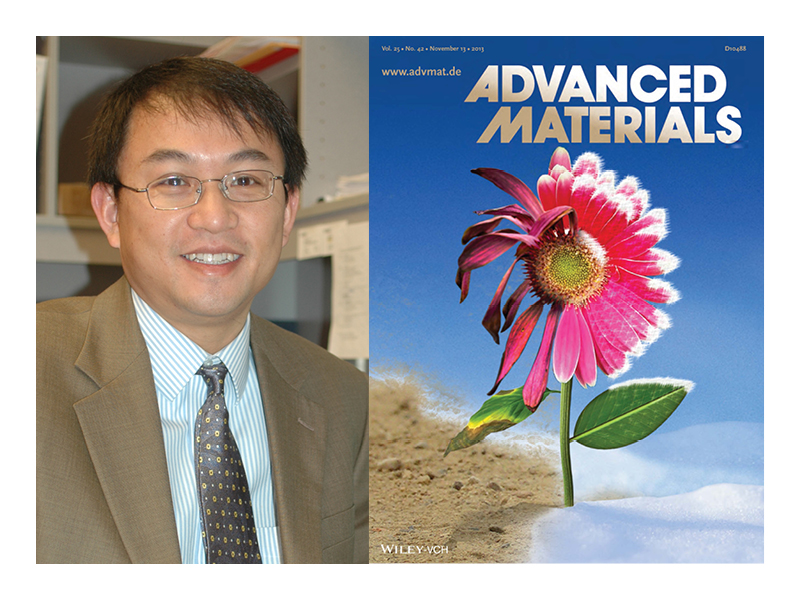Calendar Icon
Nov 13, 2013
Person Bust Icon
By Carole Wilbeck | Engineering
![]() RSS
Submit a Story
RSS
Submit a Story
Research by Li Tan, associate professor with the UNL Department of Mechanical & Materials Engineering, and a team of international scientists was featured in the Nov. 13 edition of the journal Advanced Materials.
Tan focused on metal–organic frameworks (MOFs), such as copper-based Cu (MOF)s, and applied lower temperatures to let the crystalline solids overcome their instability. Specifically, temperature altering of the materials’ lattice structures yields more organized pores to trap small molecules of gases for energy storage or drug delivery.
Since MOFs share similar mechanical behavior to rigid solids of ceramics, a crack can lead to catastrophic structural failure over a short period of time.
Tan found even at the low temperature of -56 degrees Celsius these hard solids can still be patched at their defects, and the mended crystal structures then show significant improvement in strength and resilience. The reformed structures allow for dense packing that aids the toughness of the solid, facilitating multiple cycles of loading and unloading as carrier structures.
This could help material scientists design future crystalline solids or ordered structures that can be assembled, repaired, or healed in various engineering applications.
Tan worked with Professor Xiao Cheng Zeng of UNL’s Department of Chemistry and with Professor Jean-Marc Saiter at the Institut des Matériaux in Rouen, France. Also contributing to the research was Professor Banglin Chen from the University of Texas at San Antonio Department of Chemistry.
The work was funded by the National Science Foundation, the Nebraska Center for Energy Science Research, Nebraska Research initiative, and UNL’s Layman New Directions Program. It was aided by use of the University of Nebraska’s Holland Computing Center with the USCMS Tier-2 site at UNL.
The article can be found at http://dx.doi.org/10.1002/adma.201302471.
Submit a Story
